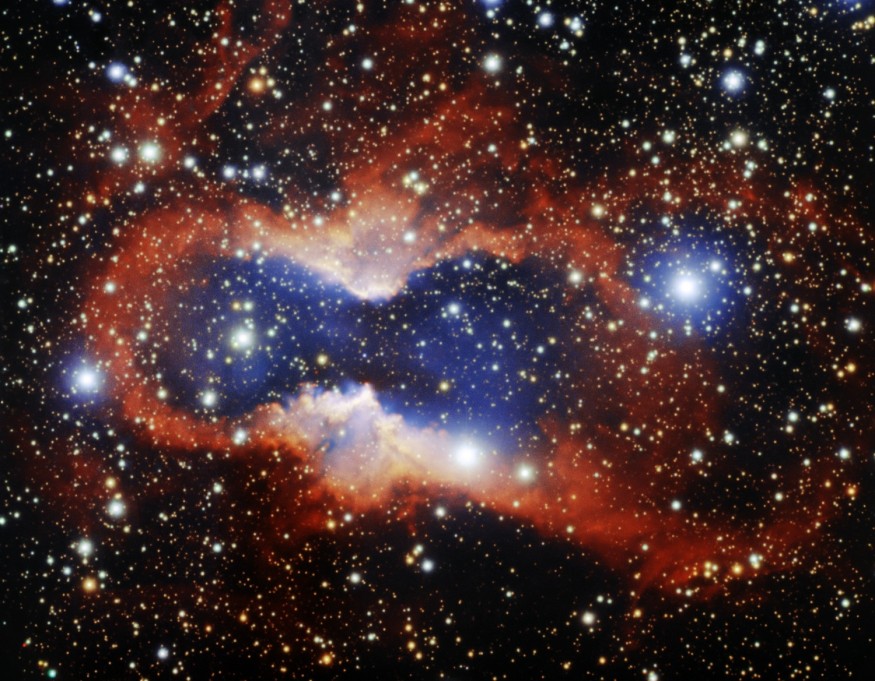
Using the Gemini South telescope, astronomers have taken a beautiful photo of the plenary nebula CVMP 1. The snapshot was taken during the recent Cerro Pachon summit in Chile. The said plenary nebula is located in Circinus' southern constellation some 6,500 light-years away. Also called Marsalkova 252 and PN G321.6+02.2, this particular object took place when an old giant star was said to have blown off its external layers in a tempestuous stellar wind form.
And, as this cast-aside astronomical atmosphere zoomed outwards heading for the interstellar space, the progenitor star's exposed and hot core started energizing the ejected gases, resulting in them to glow. Essentially, planetary nebulae such as the CVMP 1 are molded by just certain stars, specifically those, according to Sci-News, "that have a mass somewhere between 0.8 and 8 times that of our Sun."
Meanwhile, the international Gemini Observatory includes telescopes in the southern and northern hemispheres, which both can access the whole night sky. Comparable to various large observatories, a tiny fraction of the Gemini telescopes' observation is set aside to create colored images that can share with everyone the beauty of the universe. Objects are picked for their artistic appeal like the striking celestial hourglass, for one.
Massive Stars
Less massive stars are set to gently fade out, transforming into white dwarfs as they end their long lies. More massive stars, on the other hand, live shorter lives--they instead die fast and young, putting an end to their gargantuan explosions, or what we know as supernovae. For the start that lies between these extremes though, the last stage of their lives led to a remarkable astronomical exhibit.
Unfortunately, the display that the planetary nebula provided is as short as it is glorious. These objects usually live for only 10,000 years. This is a shorter period than that of most stars that live for billions of years. Relatively, the short-lived planetary nebulae come in many sizes and shapes, and various particularly attractive forms are popular like the Helix Nebula.
Diversity of Shapes
The abundant diversity of shapes stems from the variety of progenitor star systems, from which their characteristics hugely impact the ensuing planetary nebula. Several things influence the planetary nebula's shape like the presence of orbit planets, companion stars, or even the rotation original red giant stars. However, not even scholars and other experts have any detailed understanding of the processes that sculpt the displays of the beautiful astronomical fireworks yet.
Nonetheless, CVMP 1 has remained intriguing for more than just its artistic value. It is one of the largest planetary nebulae ever known; the gases that make up the hourglass are extremely enriched with nitrogen and helium. These hints together recommend that CVMP 1 is highly advanced, making it a perfect object for helping the astronomers understand further the lives of planetary nebulae.
By gauging the light released from gases in the planetary nebula, astronomers conclude that "the temperature of the central star of CVMP 1 is at least 130,000 degrees Celcius. Finally, despite this boiling temperature, the star is destined to suddenly cool over countless years. Eventually, the emitted light is set to have quite a small amount of energy for the ionizing of gases in the planetary nebula, leading to its striking hourglass shape.












